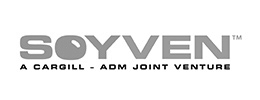Implementing Reconciliation Software – The Business Case Made
It is crucially important that all organizations, which rightly seek financial stability and control, pay careful attention to the need to deploy a robust reconciliation software.
The results of failing to do this, with the necessarily high degree of operational detail required, can be catastrophic for their reputation, both corporately and for their culpable senior officers. There have been many, well publicized instances where the plausible emergencies created as a result of a failure to address their reconciliation duties have culminated in unwelcome outcomes ranging from substantial fines to complete corporate collapse. There is certainly more attention to this issue today than there was even 10 years ago with a greater degree of intellectual capital and shared understanding of this issue complemented by a variety of IT led solutions.
However, it is hugely surprising to find that, even in today’s highly regulated environment, many businesses continue to operate akin to “the way it’s always been done”, largely using Excel or a manual processes or a combination of the two, believing cost issues or the perceived level of importance attached to this key issue to be restrictive in initiating a reconciliation solution procurement. These limiting views prevail such that including another IT project in the budget, particularly so in the current economic climate, is often deemed impractical. This is in spite of a reconciliation solution’s ability to provide the potential for improved stability and cost mitigation.
Yet the availability of a commercial off the shelf reconciliation software solution, such as ReconArt’s, offers a complete end-to-end solution covering everything from advanced matching capabilities to exception management and, an automated approach to problem resolution via user email notification and task and case management to resolve more complex issues at all stages in the resolution chain.
It remains the case that many businesses which have been able to optimize the use of the ‘old world’ practices previously outlined unintentionally disguise the latent risks they inevitably confront.
The lack of control, visibility and traceability that subsequently arises when organizations ‘release’ supervisory management and insufficiently robust processes are open to fraud and embezzlement, their vulnerabilities are there to exploit and the balance of cost and risk cannot be justified in the context of manual or spreadsheet driven processes.
So what’s to be done? End to end solutions offer complete visibility and auditable control to all reconciliation processes across the enterprise The best automated matching algorithms often offer 99% success, process cost mitigation upwards of 60-80% and a return on investment of between 3 – 9 months in many cases. Crucially, the TCO (total cost of ownership) of the most modern solutions solidify the business case with forgiving ‘professional services’ costs incorporating installation, training and support. Departmental system ‘ownership’ and usability reduce the need for specialist IT management and support input.
The ability of class leading solutions to match huge volumes of transactions allows businesses to focus their time and efforts effectively on the identification and resolution of valid and more complex exceptions. The business justification for the automation of the reconciliation challenges confronting businesses is a clear and present one. Organizations can reasonably expect direct cost recovery of 60-80% in staffing as well as cost mitigation in fraudulent activity and audit overheads, a realistically low cost of ownership and a typical ROI within a year. The virtuous circle of improved use of the system as departmental users improve their processes and procedures further adds to the compelling nature of the business case over time.

 follow our blog
follow our blog






















 Quick response
Quick response

